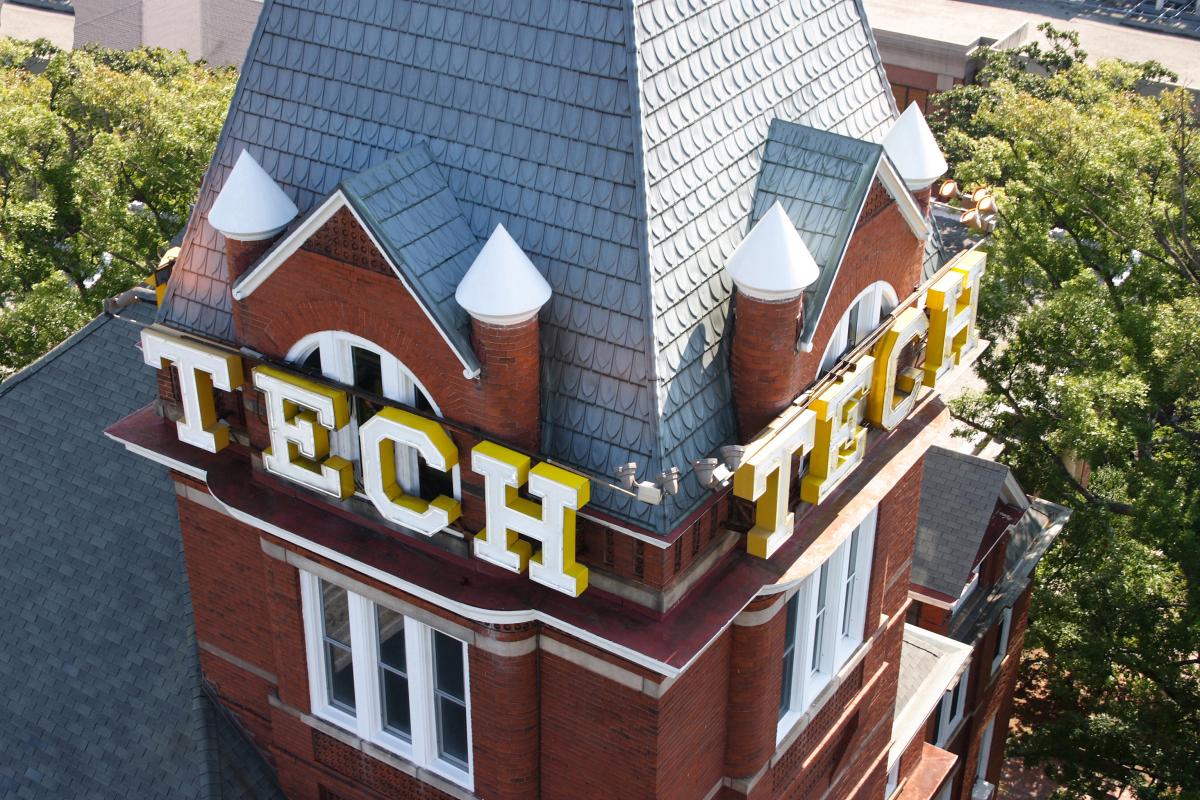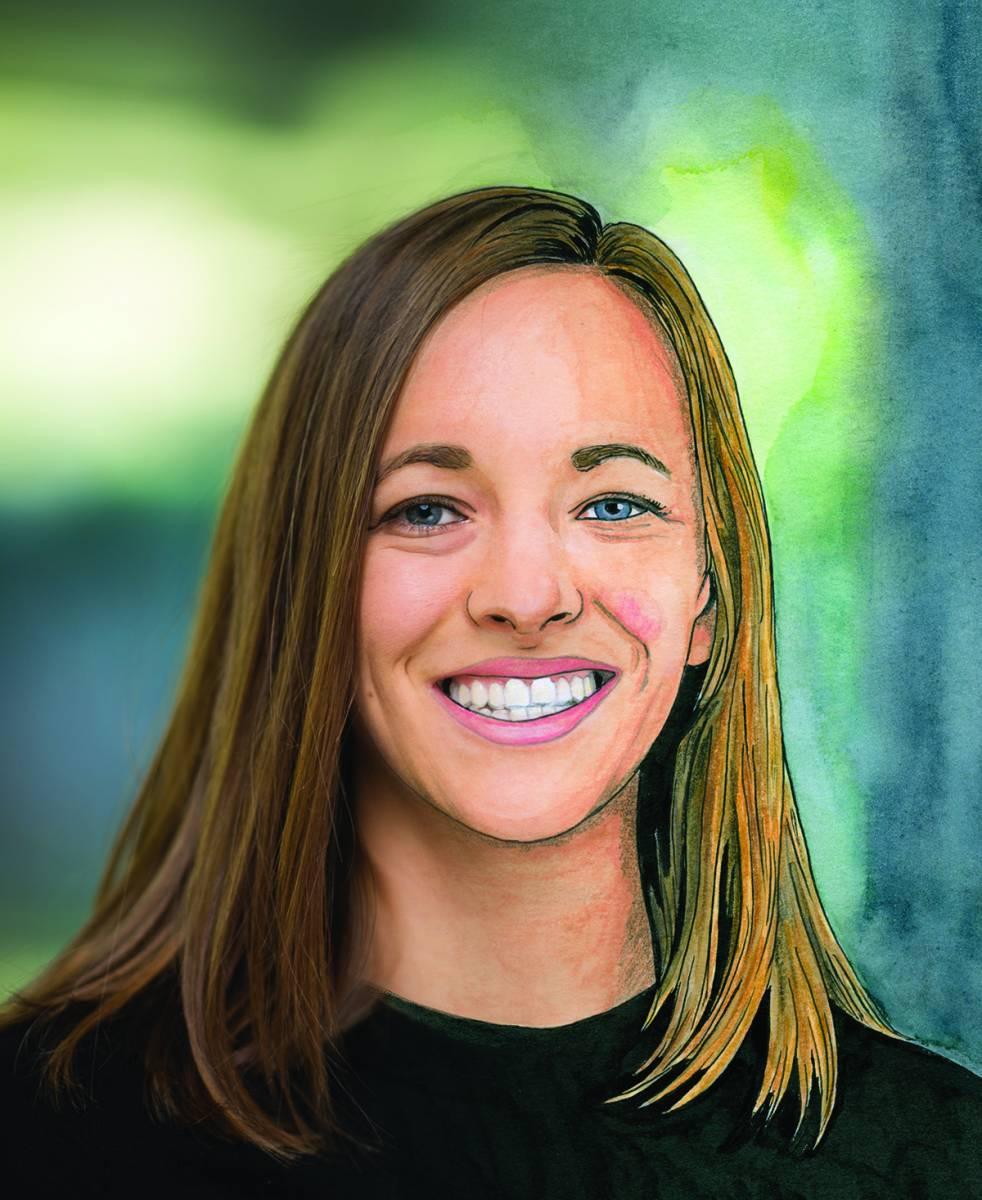How systems engineering and medical decision-making play a role in public health

Social distancing in the college classroom during the Covid-19 pandemic can be tricky. In fact, with a technique called mathematical optimization, getting to the correct number of students for a room sounds a lot like a math word problem you might see on an SAT test: if a classroom has 5,900 square feet of space and can normally hold 305 students, how many students can the room hold if everyone must be six feet apart?
Lauren Steimle and a team of researchers across a number of disciplines at Georgia Tech are trying to solve this problem, and there is more than just math that must be considered when coming up with the safest spacing out of students.
“In addition to figuring in number of students and square feet of space, you also have to consider the seating areas that are near high activity areas, such as aisles or doors, or the location of the professor,” said Steimle, assistant professor in the H. Milton Stewart School of Industrial and Systems Engineering. “So, if you are estimating the number of students who can safely fit in a classroom, it is actually quite lower than you might think based on raw mathematics.”Safely returning to campus for many colleges and universities across the U.S. has been a high-stakes decision – administrators are having to strike a balance between the quality of education and the health of students, staff and faculty. There are the financial implications for institutions as well to take into consideration. Teaching options range from smaller, in-person lectures and labs; hybrid models so the classrooms are never at full capacity; and, of course, fully remote options.

At many universities, semesters have been shortened and travel discouraged, asking students to remain on campus to keep everyone safe. “Our research group has been investigating these questions using a systems approach,” said Steimle.
“Our ultimate goal is to quantify public health risks, resource needs and costs, impact on students, faculty and staff, and the revenue implications for higher education institutions as they evaluate scenarios and contingency plans for return-to-campus during this academic year.”
Steimle’s research group, which includes collaborators Dima Nazzal and Natashia Boland within ISyE, as well as researchers in the College of Computing, is using analytics and systems modeling approaches to help colleges and universities make informed decisions about returning to campus. The group has a Github page – a company that provides hosting for software development – that offers algorithmic code and tools for anyone to use to investigate these operational issues for their own campuses.
“It’s tough because you can’t just rely on the numbers or modeling; rather, you have to make a decision based on so many different factors including human behavior,” said Steimle. “Higher ed institutions almost need a pandemic consultant – someone who can go in and say, ‘Well, here are all of the decisions that you need to make, and here are the various scenarios for in-person versus hybrid and online learning.’”
Steimle goes on to add that universities have to consider limited resources, such as teaching staff and instructional space, which are generally constrained even in non-pandemic times.
“The number of instructors that can provide in-person instruction and the amount of space you have after adjusting for physical distancing will dictate many of the other decisions regarding course modes and classroom to course assignments,” explained Steimle.
“The course modes will impact how students register and the number of students that you expect on campus, which in turn will influence the amount of resources you need for public health measures like testing and contact tracing. These decisions are interrelated, which is why a systems approach can be useful.’”
Medical decision-making and public health are what brought Steimle to Tech. In addition to her work with Covid-19 modeling pertaining to classroom safety, she’s also involved in modeling prevention and treatment of diseases, such as vaccine modeling for diseases like norovirus.
“A lot of medical decision making is about getting the right treatment to the right patient at the right time,” said Steimle. “You also have to weigh the benefits of the treatment against side effects, so a lot of factors go into making smart decisions when it comes to healthcare. Mathematical models can help us consider many options and scenarios around treatment decisions to help us better weigh these benefits and harms in a way that considers uncertainty.”
For norovirus, Steimle was part of a team that looked at populations who should be targeted for a vaccine. Noroviruses are the leading cause of acute gastroenteritis in the United States. Early results for norovirus vaccines in clinical trials have been promising, but there are still open questions as to the most cost-effective use of these potential vaccinations. Medical decision-making models can help determine which high-risk groups should get the vaccine first – the elderly who are mortality risk or young children who spread the virus.
“We’re looking at the health and economic implications of these decisions to see if it’s worth it to vaccinate certain populations,” said Steimle. “You're trying to make the most of your resources from a public health perspective, especially when vaccines cost money and you want to use your resources in the best possible way to get the most ‘bang-for-your-buck’ in terms of health outcomes.”
Steimle came to Tech, in part, because Atlanta is known by many as the public health capital of the world. The CDC, Emory School of Public Health, the Atlanta VA, Morehouse School of Medicine, and of course bioengineering at Tech are all prominent organizations that attracted her to the city from her home state of Illinois.
Steimle’s passion for public health began because her family was in the medical field. She would often join her mother at the hospital and saw first-hand the way doctors can have an impact on people’s lives. So when she left for college, she figured she’d study to become a doctor. But plans changed quickly.
“When I watched my first surgery, I almost passed out after,” recalled Steimle. “I wanted to find other ways to contribute to the health of others that didn’t involve cutting people open. I knew I liked science and math, and in college I discovered I could merge those interests with healthcare, and here I am.”
Systems engineering resonated with Steimle, as well as the psychology of decision-making. So, whether it’s novel viruses like Covid-19, the norovirus, or other medical therapeutics, Steimle is game to provide decision-makers with data-driven tools to support their decision-making processes around treatment.
“I've always been very interested our human decision-making processes,” said Steimle. “As humans we are flawed, and it’s interesting to think about how that might translate to healthcare and how some of our biases or mental heuristics can come into play. That's kind of what led me to systems engineering: learning how to make better decisions and then hopefully being able to translate that to a setting that helps people, and healthcare is a great place to do that.”